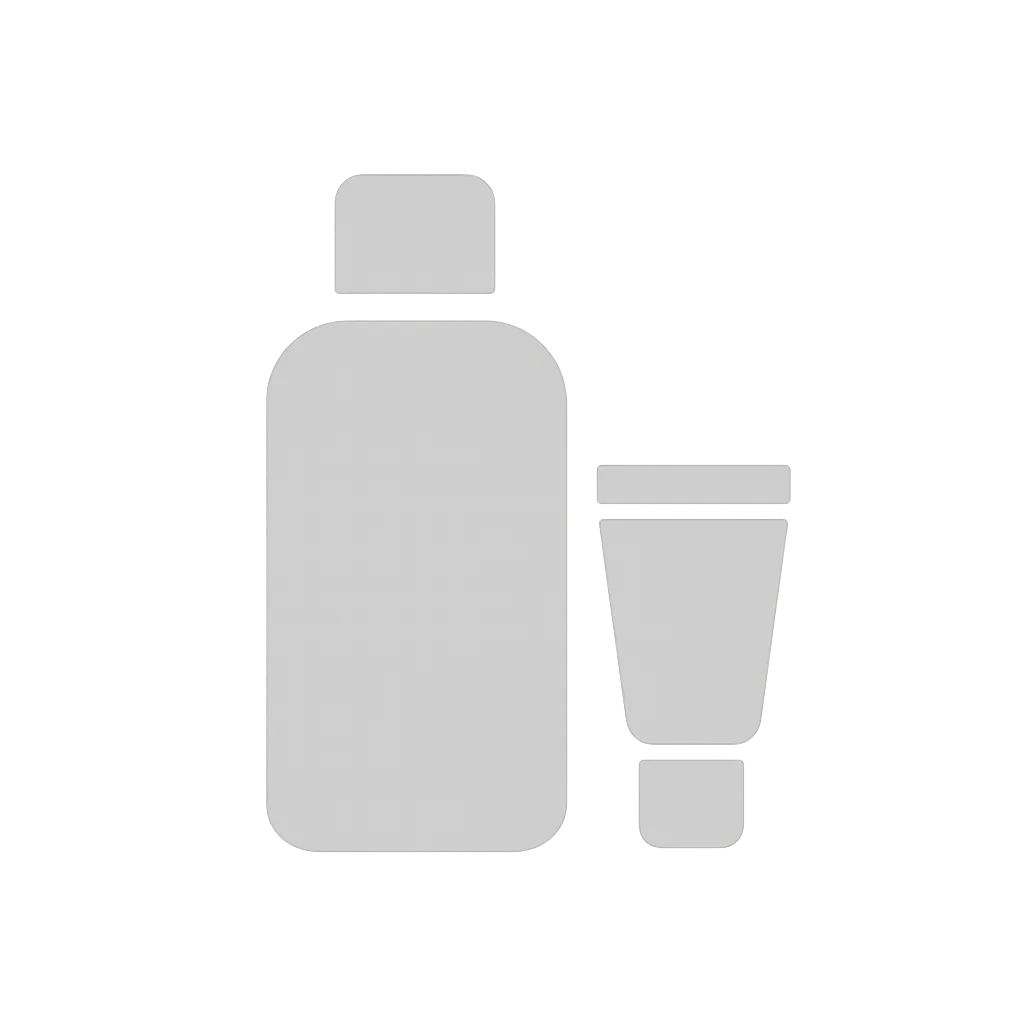What's inside
What's inside
 Key Ingredients
Key Ingredients

 Benefits
Benefits

 Concerns
Concerns

 Ingredients Side-by-side
Ingredients Side-by-side

Water
Skin ConditioningGlycerin
HumectantMelaleuca Alternifolia Leaf Water
AntimicrobialPropanediol
Solvent1,2-Hexanediol
Skin ConditioningNiacinamide
SmoothingPanthenol
Skin ConditioningHydroxyethylcellulose
Emulsion StabilisingLepidium Meyenii Root Extract
Skin ConditioningMaltodextrin
AbsorbentCaprylhydroxamic Acid
Equisetum Arvense Extract
AstringentHippophae Rhamnoides Fruit Extract
Skin ConditioningLaminaria Saccharina Extract
Skin ProtectingChondrus Crispus Extract
Skin ConditioningSodium Metabisulfite
AntioxidantAlcohol
AntimicrobialArginine
MaskingPhospholipids
Skin ConditioningLactic Acid
BufferingMelatonin
AntioxidantPotassium Sorbate
PreservativeLactobacillus Ferment
Skin ConditioningPisum Sativum Extract
Skin ConditioningPhosphate Buffered Saline
SolventWithania Somnifera Seed Extract
AntioxidantWater, Glycerin, Melaleuca Alternifolia Leaf Water, Propanediol, 1,2-Hexanediol, Niacinamide, Panthenol, Hydroxyethylcellulose, Lepidium Meyenii Root Extract, Maltodextrin, Caprylhydroxamic Acid, Equisetum Arvense Extract, Hippophae Rhamnoides Fruit Extract, Laminaria Saccharina Extract, Chondrus Crispus Extract, Sodium Metabisulfite, Alcohol, Arginine, Phospholipids, Lactic Acid, Melatonin, Potassium Sorbate, Lactobacillus Ferment, Pisum Sativum Extract, Phosphate Buffered Saline, Withania Somnifera Seed Extract
Minoxidil 2%
Alcohol
AntimicrobialPropylene Glycol
HumectantWater
Skin ConditioningCocamidopropyl Betaine
CleansingLauric Acid
CleansingDecyl Glucoside
CleansingParfum
MaskingSodium Chloride
MaskingDisodium Cocoamphodiacetate
CleansingGlycerin
HumectantGlycol Distearate
EmollientPotassium Hydroxide
BufferingGuar Hydroxypropyltrimonium Chloride
Skin ConditioningPEG-120 Methyl Glucose Dioleate
EmulsifyingXylitol
HumectantLactitol
HumectantGlyceryl Oleate
EmollientCoco-Glucoside
CleansingPolyquaternium-67
Laureth-4
EmulsifyingChlorphenesin
AntimicrobialCitric Acid
BufferingLactic Acid
BufferingSodium Acetate
BufferingSerenoa Serrulata Fruit Extract
Skin ConditioningLinalool
PerfumingIsopropyl Alcohol
SolventPhenoxyethanol
PreservativeTocopherol
AntioxidantBenzoic Acid
MaskingDehydroacetic Acid
PreservativeHydrogenated Palm Glycerides Citrate
EmollientLecithin
EmollientAscorbyl Palmitate
AntioxidantMinoxidil 2%, Alcohol, Propylene Glycol, Water, Cocamidopropyl Betaine, Lauric Acid, Decyl Glucoside, Parfum, Sodium Chloride, Disodium Cocoamphodiacetate, Glycerin, Glycol Distearate, Potassium Hydroxide, Guar Hydroxypropyltrimonium Chloride, PEG-120 Methyl Glucose Dioleate, Xylitol, Lactitol, Glyceryl Oleate, Coco-Glucoside, Polyquaternium-67, Laureth-4, Chlorphenesin, Citric Acid, Lactic Acid, Sodium Acetate, Serenoa Serrulata Fruit Extract, Linalool, Isopropyl Alcohol, Phenoxyethanol, Tocopherol, Benzoic Acid, Dehydroacetic Acid, Hydrogenated Palm Glycerides Citrate, Lecithin, Ascorbyl Palmitate
Ingredients Explained
These ingredients are found in both products.
Ingredients higher up in an ingredient list are typically present in a larger amount.
Alcohol comes in many different forms. Different types of alcohol will have different effects on skin. This ingredient is usually an astringent alcohol.
These alcohols are drying on the skin. They may strip away your skin's natural oils and even damage your skin barrier. Astringent alcohols may also irritate skin.
Other types of astringent alcohols include:
According to the National Rosacea Society based in the US, you should be mindful of products with these alcohols in the top half of ingredients.
Any type of sanitizing product will have high amounts of alcohol to help kill bacteria and viruses.
Fatty alcohols come from plant oils such as coconut oil. These can help hydrate the skin and are non-irritating. Some fatty alcohols include cetyl and stearyl alcohol.
Learn more about AlcoholGlycerin is already naturally found in your skin. It helps moisturize and protect your skin.
A study from 2016 found glycerin to be more effective as a humectant than AHAs and hyaluronic acid.
As a humectant, it helps the skin stay hydrated by pulling moisture to your skin. The low molecular weight of glycerin allows it to pull moisture into the deeper layers of your skin.
Hydrated skin improves your skin barrier; Your skin barrier helps protect against irritants and bacteria.
Glycerin has also been found to have antimicrobial and antiviral properties. Due to these properties, glycerin is often used in wound and burn treatments.
In cosmetics, glycerin is usually derived from plants such as soybean or palm. However, it can also be sourced from animals, such as tallow or animal fat.
This ingredient is organic, colorless, odorless, and non-toxic.
Glycerin is the name for this ingredient in American English. British English uses Glycerol/Glycerine.
Learn more about GlycerinLactic Acid is another well-loved alpha hydroxy acid (AHA). It is gentler than glycolic acid but still highly effective.
Its main role is to exfoliate the surface of the skin by loosening the “glue” that holds dead skin cells together. Shedding those old cells leads to smoother, softer, and more even-toned skin.
Because lactic acid molecules are larger than glycolic acid, they don’t penetrate as deeply. This means they’re less likely to sting or irritate, making it a great choice for beginners or those with sensitive skin.
Like glycolic acid, it can:
Lactic acid also acts as a humectant (like hyaluronic acid). It can draw water into the skin to improve hydration and also plays a role in the skin's natural moisturizing factor (NMF) in the form of sodium lactate.
Studies show it can boost ceramide production to strengthen the skin barrier and even help balance the skin’s microbiome.
To get results, choose products with a pH between 3-4.
Lower strengths (5-12%) focus on surface exfoliation; higher strengths (12% and up) can reach deeper in the dermis (deeper, supportive layer) to improve skin texture and firmness over time.
Though it was originally derived from milk, most modern lactic acid used in skincare is vegan. It is made through non-dairy fermentation to create a bio-identical and stable form suitable for all formulations.
When lactic acid shows up near the end of an ingredient list, it usually means the brand added just a tiny amount to adjust the product’s pH.
Legend has it that Cleopatra used to bathe in sour milk to help reduce wrinkles.
Lactic acid is truly a gentle multitasker: it exfoliates, hydrates, strengthens, and brightens. It's a great ingredient for giving your skin a smooth, glowing, and healthy look without the harshness of stronger acids.
Read more about some other popular AHA's here:
Learn more about Lactic AcidWater. It's the most common cosmetic ingredient of all. You'll usually see it at the top of ingredient lists, meaning that it makes up the largest part of the product.
So why is it so popular? Water most often acts as a solvent - this means that it helps dissolve other ingredients into the formulation.
You'll also recognize water as that liquid we all need to stay alive. If you see this, drink a glass of water. Stay hydrated!
Learn more about Water